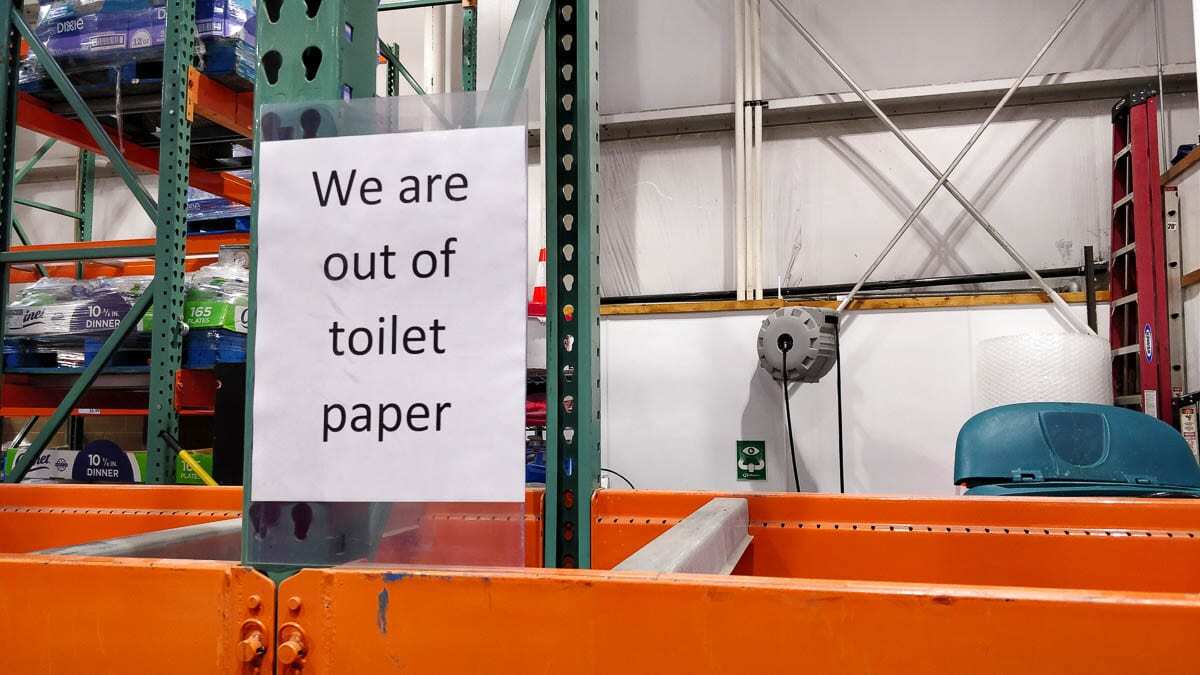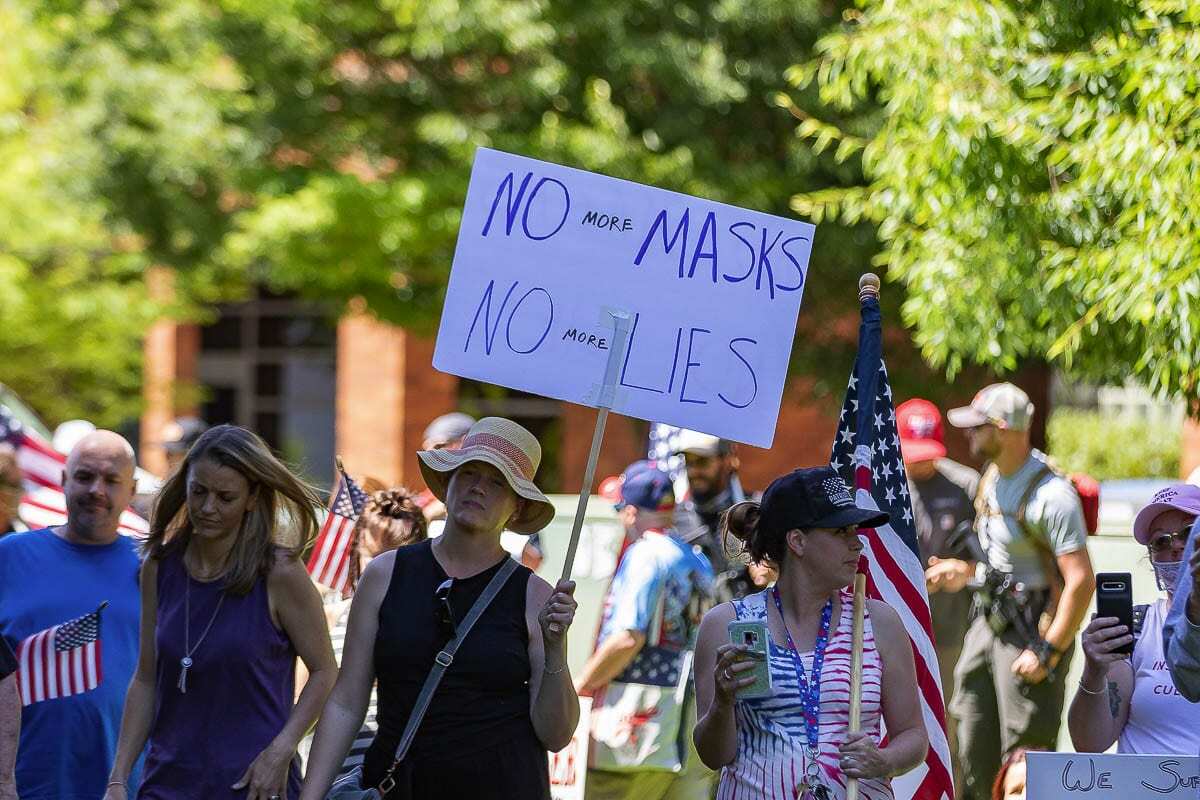March 6 marked the first of more than 18,500 confirmed COVID-19 cases for the county and the beginning of a seemingly endless effort to turn the corner
VANCOUVER – March 6, 2020. A man in his seventies with no recent travel history becomes the first in Clark County to test positive for COVID-19.
The Clark County Community Health building. File photo
Just over two weeks later, as the virus spread across the state, country, and world, Washington Governor Jay Inslee ordered residents to stay home, close restaurants and other businesses, and begin the seemingly endless effort to bend the curve “would begin in earnest.
“This is a human tragedy on a scale that we cannot yet project,” Inslee said at the time. “It’s time to squat down to win this fight.”
As news of the impending closure spread, the shelves were emptied of staples such as paper products, beans, flour and rice. Many of these bottlenecks would last for weeks.
 A prolonged shortage of toilet paper was perhaps the most memorable part of the early pandemic. File photo
A prolonged shortage of toilet paper was perhaps the most memorable part of the early pandemic. File photo
In mid-April, it appeared that early efforts to slow the spread of the virus had been successful. Restaurants were restricted to indoor dining, somewhat larger gatherings were allowed, and there is even talk of opening schools with at least a few students in classrooms by the coming school year.
Then, after July 4th, a new wave of cases will sound alarm bells, triggering new mask mandates.
Then a new bump sounded after July 4th as the falls passed the top in May. In Clark County as of July 23, 1,318 cases have been confirmed with 33 deaths.
In August, many families, exhausted from months of restrictions, resist requests from public health officials and make their usual trips wherever possible. Students prepare to return to school remotely, but with the promise that the experience will be vastly improved.
 Protests against mask mandates marked the summer months of the pandemic in Clark County and elsewhere. File photo
Protests against mask mandates marked the summer months of the pandemic in Clark County and elsewhere. File photo
As of the end of September, Clark County has reported 3,313 cases, 66 deaths, and a rate of 66.4 new cases per 100,000 population in the past 14 days. Many states in the American Midwest and Southeast are seeing massive spikes in new cases and hospitalizations, raising concerns that other regions may soon experience the same.
In October, there were 1,160 more cases in Clark County and 13 more deaths. It won’t be long before those numbers are exceeded in a week.
In November the wave struck and Clark County doubled its total COVID-19 cases in a single month, adding 36 more deaths. Restaurants are getting ready as Governor Inslee again forces them to shut down indoor dining, along with further restrictions on entertainment venues and fitness facilities. Plans to reopen many areas of the state are on hold indefinitely.
December brings hope in the form of the first vaccine approval. The Food and Drug Administration granted emergency approval on December 11 for an mRNA vaccine manufactured by Pfizer-BioNTech, and a week later for a second similar vaccine from Moderna.
 This masked statue in downtown Vancouver was discovered shortly after an order from Governor Jay Inslee. Photo by Jacob Granneman
This masked statue in downtown Vancouver was discovered shortly after an order from Governor Jay Inslee. Photo by Jacob Granneman
Meanwhile, the 14-day case rate in Clark County has risen to 264 per 100,000 people, closing the year with 13,172 cases and 150 deaths.
In January, the rate climbs to nearly 350 per 100,000 people, which includes 17,386 cases and 189 deaths. But it also shows clear signs that the largest wave of the pandemic may have broken out, as the daily number of cases declines and the number of hospital stays declines.
Today the fall rate has dropped to 105 and is likely to drop below 100 this week. Hospital admissions are near their lowest level in the first few months of the pandemic, and a third vaccine, a single-dose version from Johnson & Johnson, is being rolled out.
Restaurants can once again welcome a limited number of dine-in customers, and restrictions have been eased in other businesses.
In the first week of March, Washington met its goal of delivering 45,000 daily doses of vaccine and planned to extend eligibility to all key workers by March 22nd.
To date, Clark County has counted 18,567 confirmed COVID-19 cases and 228 deaths (23 of which are still under investigation).
More than just data
In addition to creating daily updates of COVID-19 regarding raw data, experts from Clark County Public Health have also been working on tracking the pandemic behind the scenes.
This means you have to call 16,000+ confirmed cases and thousands of closer contacts to notify people when they might need to be quarantined. Much of this work was done in collaboration with the Public Health Institute under an ongoing contract. This group is now working to notify people on the county’s vaccine waiting list and help them schedule appointments.
The health department has also worked with businesses, long-term care facilities, schools and other institutions to provide guidance on how to protect their employees or residents, and to help track contacts in the event of an outbreak.
This included high profile events such as the outbreak at Firestone Pacific Foods’ fruit packaging facility or others, as well as tracking potential exposures in schools across the county.
Public Health has also worked to distribute over $ 700,000 worth of aid to hundreds of Clark County families who were isolated after exposure to a known case of COVID-19. This included rent or mortgage support for 463 households as well as assistance with payment of utilities for 586 households.
More than 700 restaurants and other grocery businesses hit by the economic stalemate received a total of more than $ 925,000 in aid distributed through Clark County Public Health.
The department also worked with Community Services to open a motel where nearly 100 people, mostly homeless, were placed in quarantine or isolation after testing positive or being exposed to a known case.
More recently, Public Health worked with a FEMA Type 1 Incident Management team to set up mobile vaccination clinics, which to date have helped more than 1,000 people in retirement and adult family homes across the county and with the city Vaccinate Vancouver and the federal government to set up a community vaccination station in Tower Mall in the same location as a clinic with no barrier test.
The hope now is that the worst of the pandemic is over and that ongoing vaccinations and medical discoveries will allow us to live again as usual when spring comes and especially as we move into the summer months.


